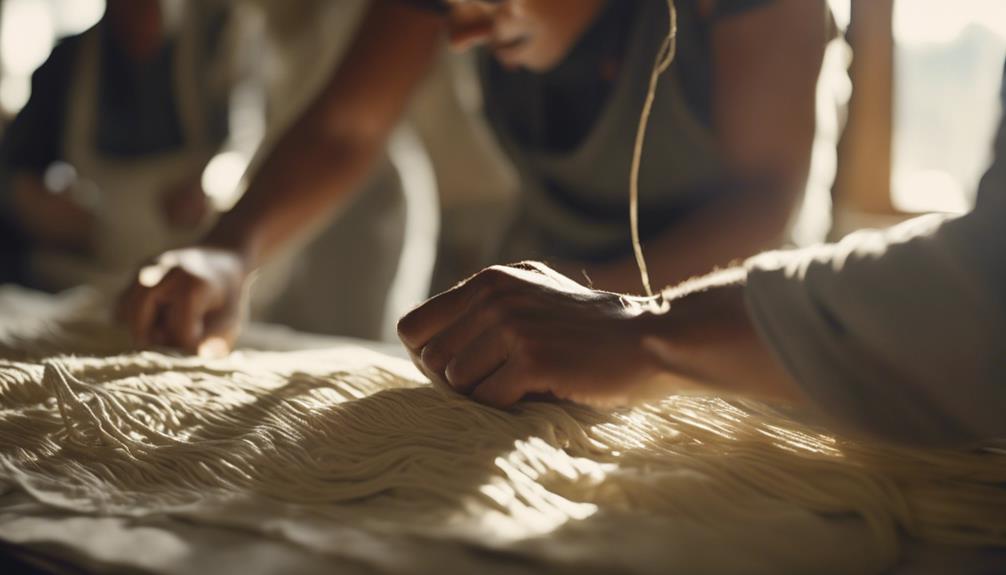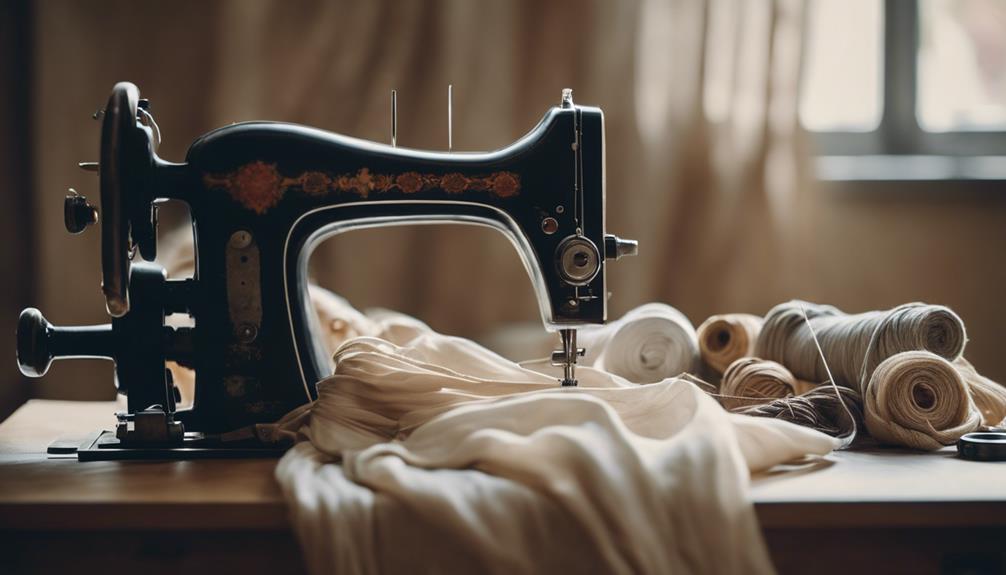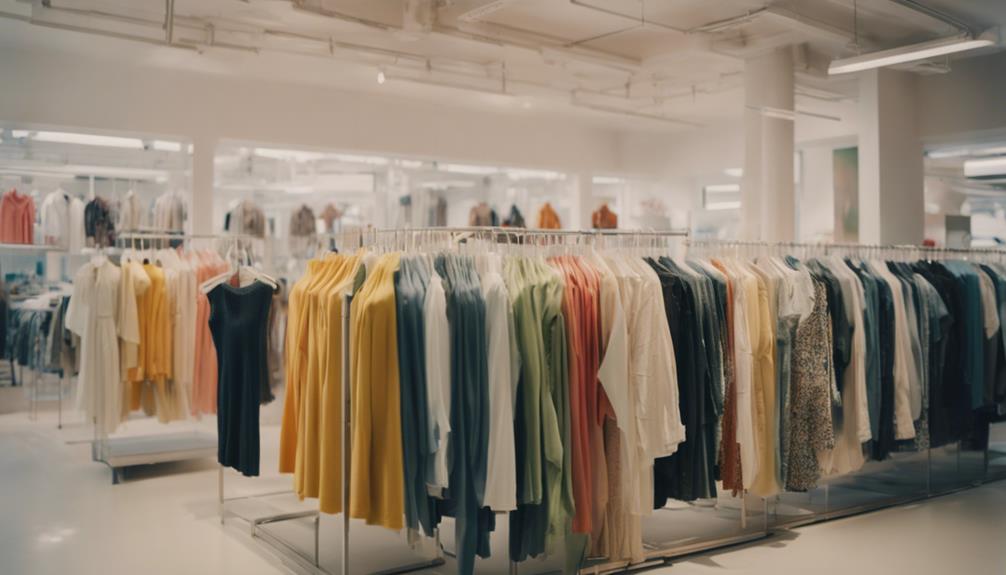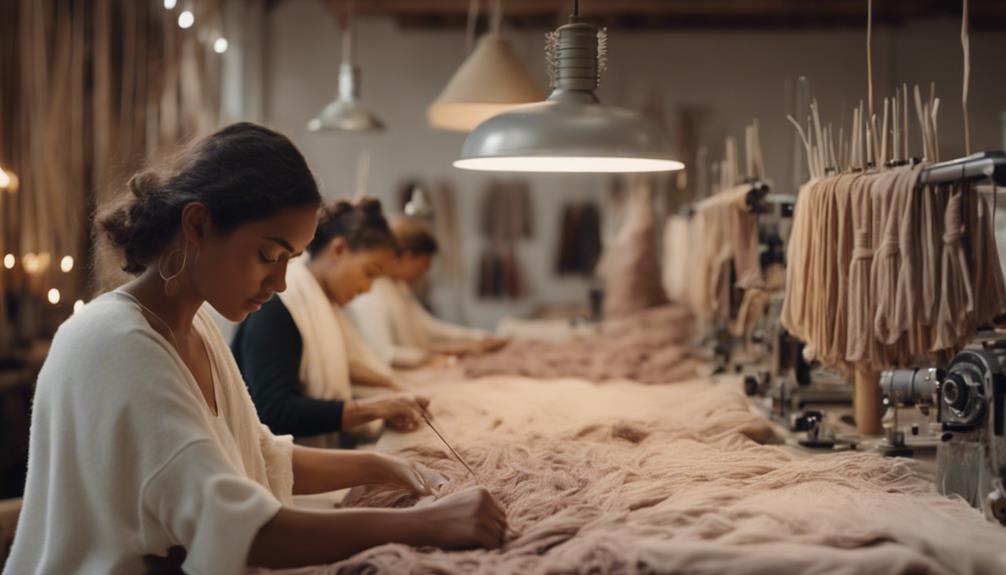Sustainable fashion tends to have a higher price point due to its emphasis on quality materials and ethical production methods. When compared to traditional fabrics, organic materials can cost around 25% more, reflecting a dedication to fair wages and safe working conditions for those in the garment industry. Additionally, smaller production runs limit economies of scale, leading to further price increases. Although the upfront cost may seem steep, these sustainable garments often provide better durability and long-term value. By recognizing these factors, you can truly appreciate what sets sustainable fashion apart and why it is worth investing in. Stay tuned for more insights on this evolving trend!
Key Takeaways
- Sustainable fashion involves higher production costs due to the use of quality materials and ethical labor practices, impacting overall pricing.
- Ethical brands prioritize fair wages and safe working conditions, contributing to increased garment prices compared to fast fashion.
- High-quality, durable materials, like organic cotton, are more expensive but enhance garment longevity, offering better long-term value.
- Smaller production runs in sustainable fashion limit economies of scale, resulting in higher prices per item.
Economic Factors Behind Pricing
When you consider the costs of sustainable fashion, it's clear that higher production expenses stem from quality materials and ethical labor practices. Sustainable materials, like organic cotton, often come with a higher price tag—sometimes 25% more than conventional fabrics. This increase in cost reflects the commitment of ethical fashion brands to use only the best resources for their products.
Additionally, these brands prioritize fair wages and safe working conditions for their garment workers, which further contributes to production costs. Unlike fast fashion, which often exploits low-wage labor, ethical fashion brands guarantee that their workers are compensated fairly, impacting the overall expenses of making clothes.
Moreover, sustainable brands usually produce clothing in smaller quantities to limit overproduction and waste. This practice prevents them from benefiting from economies of scale, meaning you'll see a higher price per item.
However, investing in quality garments ultimately pays off. When you analyze the cost per wear, you'll find that these higher-quality items often provide better value over time, saving you money in the long run compared to cheaper, low-quality alternatives.
Labor Practices and Costs

The higher costs of sustainable fashion reflect not only premium materials but also the commitment to fair labor practices that ascertain workers earn a living wage.
Only 2% of garment workers globally earn this wage, but ethical brands often exceed legal requirements, resulting in higher garment prices.
Sustainable brands prioritize safe working conditions and benefits for their workers, which increases production costs compared to fast fashion's exploitative labor practices.
While fast fashion typically allocates around 70% of garment costs to fabric, ethical brands invest more in labor to ascertain fair compensation. This commitment to responsible labor practices directly impacts the retail prices you see.
The true cost of fashion goes beyond just what's on the price tag. Ethical production practices, including fair wages and sustainable materials, lead to higher prices that reflect the value of human dignity in the supply chain.
Additionally, ethical brands face financial risks from unsold inventory due to their commitment to fair labor practices, while fast-fashion models can absorb losses through bulk manufacturing discounts.
Quality of Materials Used

Sustainable fashion prioritizes high-quality, durable materials that not only enhance garment longevity but also contribute to a reduced environmental footprint. When you choose sustainable clothing, you're investing in fabrics that are designed to last, unlike the fast-fashion alternatives made from cheap synthetics. This commitment to quality comes with higher overall costs, but it's worth it for the long-term benefits.
Here are some key materials often found in sustainable fashion:
- Organic cotton: This natural fiber is about 25% more expensive than conventional polyester due to its labor-intensive farming practices.
- Eco-friendly materials: Biodegradable fabrics are often pricier, reflecting their lower environmental impact compared to traditional options.
Production Methods and Scale

When you think about sustainable fashion, consider how production methods and scale impact costs.
Brands focusing on ethical production prioritize fair wages and safe working conditions, which can drive prices up.
Additionally, smaller production runs limit efficiency but help reduce waste, ultimately affecting what you pay for those thoughtfully made pieces.
Ethical Production Practices
Ethical production practices prioritize fair wages and safe working conditions, often resulting in higher garment costs compared to fast-fashion brands. When you choose sustainable fashion, you're not just buying clothes; you're supporting a movement that values human rights and the environment.
Here are some key factors contributing to the higher costs:
- Fair Wages: Workers are compensated fairly, ensuring their rights and dignity are respected.
- Eco-Friendly Materials: Sustainable brands often use organic cotton or other materials that can be more expensive than conventional options.
These ethical production practices also focus on sustainable practices that minimize environmental impact. Brands often produce in smaller batches to avoid waste, which increases per-piece manufacturing costs.
Additionally, they invest in safer working conditions and environmentally responsible methods, further impacting pricing.
While these factors may make sustainable fashion more expensive upfront, they contribute to a fairer, more responsible industry that values both people and the planet.
Scale and Efficiency
The higher costs associated with ethical production practices often stem from the scale and efficiency of manufacturing methods used by sustainable fashion brands. Unlike fast fashion brands that produce in bulk, ethical brands typically create clothing in smaller quantities. This approach helps them avoid overproduction but leads to higher production costs per garment.
Fast fashion's mass manufacturing allows for significant savings on materials and labor, enabling them to offer lower prices that sustainable brands can't match.
Sustainable fashion brands focus on quality and durability, often using sustainable materials like organic cotton, which can be 25% more expensive than synthetic alternatives. This choice reflects their commitment to eco-friendly practices but also contributes to higher pricing.
Additionally, ethical brands prioritize fair wages and safe working conditions for their workers, which adds further costs to their production processes.
In essence, while the scale and efficiency of fast fashion allow for lower prices, sustainable brands' commitment to ethical practices and sustainable materials results in higher production costs. This difference ultimately affects the price you see on the rack, highlighting the value of supporting ethical brands.
Consumer Perception and Behavior

When you think about sustainable fashion, you might assume it's too pricey compared to fast fashion.
However, considering the cost per wear can change your perspective, showing that investing in quality pieces could save you money in the long run.
As more people recognize the value of ethical practices, shifting your mindset could help support a more sustainable future in fashion.
Misconceptions About Ethical Costs
Many consumers wrongly assume that sustainable fashion is always more expensive than conventional options, overlooking the true value and potential savings of investing in quality garments. This misconception often arises from the allure of fast fashion's low upfront costs, which can hide significant hidden expenses related to poor quality and unethical labor practices.
Here are a few points to reflect on:
- Quality Matters: Ethical fashion often prioritizes quality, leading to longer-lasting garments that stand the test of time.
- Comparable Prices: Many smaller ethical brands offer prices that rival conventional options, debunking the myth that sustainable fashion is always pricier.
Value of Cost Per Wear
Understanding the value of cost per wear can transform how you view your clothing purchases, highlighting the financial benefits of investing in sustainable fashion.
When you analyze your wardrobe, consider a $200 dress worn 40 times. That dress costs you just $5 per wear. In contrast, if you buy multiple $40 fast-fashion dresses that you only wear twice, you're paying $20 per wear. This stark difference shows that lower upfront prices can lead to greater overall expenses due to frequent replacements.
Many ethical and sustainable brands offer competitively priced items when you factor in their durability and longevity. By prioritizing quality over quantity, you can reduce waste and make more economical choices. This mindset shift encourages you to invest in sustainable fashion that lasts, ultimately saving you money in the long run.
Educating yourself on the value of cost per wear fosters mindful purchasing habits. It helps you move away from the instant gratification associated with fast fashion and embrace a more sustainable approach to clothing consumption. By understanding this concept, you're more likely to view sustainable fashion as a wise investment rather than an expense.
Shifting Consumer Mindsets
Shifting how you perceive value in fashion can lead to a greater appreciation for sustainable options, moving beyond the allure of low upfront costs. Understanding that sustainable fashion brands focus on quality and ethics is essential. When you start to view the price points of ethical garments through the lens of long-term value, the initial investment becomes clearer.
Consider these points:
- Quality Over Quantity: Investing in fewer, well-made items means you'll spend less over time.
- Ethical Production: Higher prices reflect fair wages and responsible practices, unlike fast fashion's exploitation.
As you shift your consumer habits, recognize that sustainable fashion isn't just about higher prices; it's about making choices that benefit you and the planet in the long run. Consider supporting brands that prioritize ethical sourcing, fair wages, and transparent production processes. By investing in quality pieces that are designed to last, you can actually save money in the long term. Additionally, keep an eye out for sales and promotions to make sustainable fashion affordability more attainable. Remember, every small decision you make contributes to a more sustainable and ethical fashion industry.
Industry Trends and Challenges

As the fast fashion model continues to dominate the market, sustainable brands face significant challenges in competing on price and scale. Fast fashion brands, like Target and Gap, thrive on bulk manufacturing, driving down costs while contributing to substantial environmental impact. In contrast, sustainable fashion industry players produce ethically made garments in smaller quantities to avoid overproduction, which naturally raises their prices.
Here's a breakdown of the current landscape:
| Challenge | Fast Fashion Brands | Sustainable Brands |
|---|---|---|
| Manufacturing Scale | Large-scale, low cost | Small-scale, higher cost |
| Environmental Impact | High waste and pollution | Focus on eco-friendly practices |
| Consumer Awareness | Low emphasis on ethics | Requires education on sustainability |
| Market Competition | Strong market presence | Struggling to gain visibility |
| Consumer Responsibility | Often overlooked | Appeals to ethical consumers |
Consumer education is essential for shifting habits towards supporting the sustainable fashion industry. As consumers become more aware of the benefits of ethically made clothing, the market dynamics may start to change, paving the way for a more sustainable future.
The Cost of Fast Fashion

The true cost of fast fashion goes far beyond the low price tags you see, revealing a web of environmental and social consequences that affect us all. While you may enjoy the thrill of snagging cheap clothes, it's essential to recognize the hidden costs that come with them:
- Worker exploitation: Many garments are produced in sweatshops where laborers work in unsafe conditions for meager wages.
- Overconsumption: The lure of low prices encourages you to buy more than you need, leading to a cycle of waste and disposal.
This mindset of instant gratification might save you money in the short term, but it has long-lasting impacts on communities and the planet.
Fast fashion thrives on speed and low costs, resulting in overproduction and significant waste. When you consider the true cost, it's clear that those low prices come at a steep price for our environment and the people who make your clothes.
Frequently Asked Questions
Why Is Sustainable Fashion so Expensive?
Sustainable fashion's high cost comes from eco-friendly materials, fair labor practices, and limited production. You're investing in quality and ethics, ensuring your clothing lasts longer and supports responsible production, ultimately benefiting both you and the planet.
What Is the Problem With Sustainable Fashion?
You might think sustainable fashion's just too pricey. However, the real issue lies in the industry's struggle to balance ethical practices, eco-friendly materials, and consumer demand, often compromising accessibility while aiming for a more responsible future.
Do People Really Care About Sustainable Fashion?
Yes, you really care about sustainable fashion. With growing awareness about environmental impacts, many of you are willing to pay extra for eco-friendly options, aligning your purchasing choices with your values and supporting ethical brands.
What Is the Paradox of Sustainable Fashion?
In the world of fashion, the paradox lies in how you're drawn to sustainable choices yet face higher prices. You're investing in ethics and quality, but it challenges your perception of affordability in clothing.
Conclusion
To sum up, sustainable fashion may seem pricey, but it's often a reflection of ethical practices and high-quality materials.
Did you know that the average cost to produce a sustainable garment is 20-30% higher than fast fashion? This increase supports fair wages and environmentally-friendly production methods.
By choosing sustainable options, you're not just investing in your wardrobe; you're also making a positive impact on the planet and supporting workers worldwide.
It's a choice worth making!









